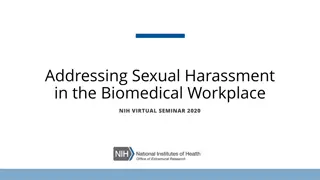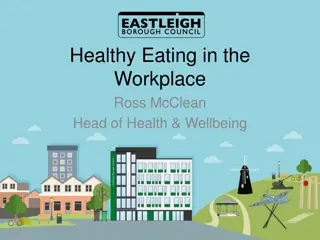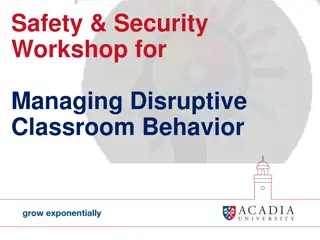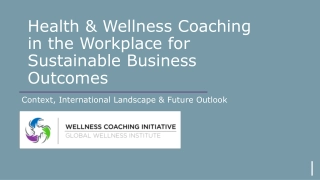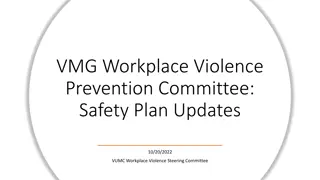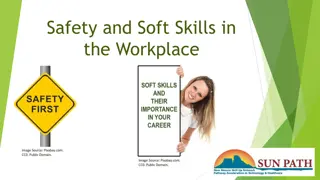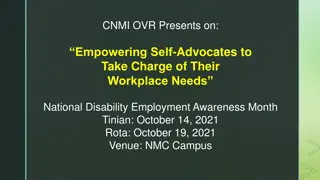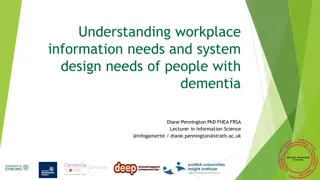Importance of Ventilation in the Workplace Environment
Adequate ventilation plays a crucial role in reducing the risk of virus transmission, particularly aerosols, in enclosed areas like workplaces. This presentation highlights the significance of ventilation and how health and safety representatives can collaborate to address concerns. It also discusses guidance from the Health and Safety Executive, emphasizing the importance of including ventilation in COVID-19 risk assessments for creating a secure work environment. Various images and information are provided to educate on assessing risks and improving ventilation in different settings.
Download Presentation

Please find below an Image/Link to download the presentation.
The content on the website is provided AS IS for your information and personal use only. It may not be sold, licensed, or shared on other websites without obtaining consent from the author. Download presentation by click this link. If you encounter any issues during the download, it is possible that the publisher has removed the file from their server.
E N D
Presentation Transcript
Ventilation Linda Allan Regional Officer
Aim 2 RAISE AWARENESS OF THE IMPORTANCE OF VENTILATION IN THE WORKING ENVIRONMENT HOW HEALTH AND SAFETY REPRESENTATIVES CAN WORK IN PARTNERSHIP TO TACKLE CONCERNS The Royal College of Midwives | www.rcm.org.uk
Health and Safety Executive 3 The HSE is an independent regulator who regulate health and safety law in Great Britain. They are able to take enforcement action to ensure employers are complying with health and safety lawin order to protect staff and the public. Unless otherwise stated the content of this presentation has been obtained from the Health and Safety Executive (HSE) Website and associated links. The Royal College of Midwives | www.rcm.org.uk
Swiss Cheese Model 4 The Royal College of Midwives | www.rcm.org.uk
COVID 19 HSE Guidance 5 The HSE have provided employers with a comprehensive guide detailing factors to consider as part of their covid risk assessments Risk assessment - Working safely during the coronavirus (COVID-19) pandemic (hse.gov.uk) They have also included a detailed example of what should be included What to include in your COVID-19 risk assessment (hse.gov.uk) Ventilation should be considered, alongside other control measures to reduce risks of transmission as part of making your workplace COVID-secure, such as social distancing, keeping your workplace clean and frequent handwashing. The Royal College of Midwives | www.rcm.org.uk
Why Ventilation Is Important 6 Adequate ventilation reduces how much virus is in the air. It helps reduce the risk from aerosol transmission, when someone breathes in small particles (aerosols) in the air after a person with the virus has been in the same enclosed area. The risk is greater in areas that are poorly ventilated. Ventilation reduces the aerosol risk but has minimal impact on: droplet transmission (where people are within 2 metres of each other) contact transmission (touching surfaces) The Royal College of Midwives | www.rcm.org.uk
Assessing the Risk 7 Adequate ventilation can look different in different workplaces or settings Deciding what adequate ventilation looks like in your workplace should be considered as part of a risk assessment. Assessing the risk from aerosol transmission in enclosed areas: identify poorly ventilated areas decide on the steps you can take to improve ventilation The Royal College of Midwives | www.rcm.org.uk
Types of Ventilation 8 The lawsays employers must make sure there s an adequate supply of fresh air (ventilation) in enclosed areas of the workplace. You should be maximising the fresh air in a space and this can be done by: natural ventilation which relies on passive air flow through windows, doors and air vents that can be fully or partially opened mechanical ventilation using fans and ducts to bring in fresh air from outside a combination of natural and mechanical ventilation, for example where mechanical ventilation relies on natural ventilation to maximise fresh air The Royal College of Midwives | www.rcm.org.uk
Identifying Poorly Ventilated Areas 9 The priority for your risk assessment is to identify areas of your workplace that are usually occupied and are poorly ventilated. There are some simple ways to identify poorly ventilated areas: Look for areas where people work and there is no mechanical ventilation or natural ventilation Check that mechanical systems provide outdoor air, temperature control or both. If a system only recirculates air and has no outdoor air supply, the area is likely to be poorly ventilated Identify areas that feel stuffy or smell bad You may wish to use carbon dioxide (CO2) monitors. Checking CO2 levels will help you decide if ventilation is poor. The monitors are less effective in areas used by few people Make a list of areas in your workplace and how they are ventilated. Floor or design plans may help with this. Remember to include changing rooms and areas used for breaks. The Royal College of Midwives | www.rcm.org.uk
Assessing the Risks 10 How many people use or occupy the area? The more people who use or occupy an area the greater the risk that an infected person is there, increasing possible exposure to aerosol transmission. Reducing the number of people who use or occupy an area reduces this risk. This risk increases if an area is poorly ventilated and occupied by more than one person. Consider how many people use or occupy an area at any one time. Is there a set number of people each day or do numbers fluctuate? How much time do people spend in the area? The longer people use or occupy an area, the greater the risk. Consider how many people use or occupy an area for a sustained period (for example a full shift), and how many come and go throughout the day. Can you reduce this in any way? How large is the area? The larger the area, the lower the risk. This is because larger areas: have more air to help dilute the virus tend to be designed with higher ventilation rates mean it takes longer for aerosols to build up The Royal College of Midwives | www.rcm.org.uk
Assessing the Risk 11 What tasks or activities take place in the area? Activities that make you breathe deeper, for example physical exertion or shouting, will increase generation of aerosols and increase the risk of transmission. These activities increase transmission risk even in areas with adequate ventilation. If possible, avoid or redesign these activities to reduce the risk, for example moving activities outside Are there any features in the workplace that affect ventilation? You may have large machinery, equipment or other features that would prevent air circulating. This could create stagnant parts of the area so consider how to improve the flow of air in that area. Is there a complex ventilation system? Workplaces that may have complex ventilation systems include: some old buildings buildings with multiple floors and rooms, with different ventilation systems systems designed for product manufacturing reasons, which may include additional recirculation If your workplace has a complex ventilation system, there is guidance from the Chartered Institution of Building Services Engineers (CIBSE), or you may need to get a ventilation engineer to provide expert advice on what system you need to reduce any potential transmission risks. The Royal College of Midwives | www.rcm.org.uk
Air Cleaning and Filtration Units 12 Air cleaning and filtration units You can use local air cleaning and filtration units to reduce airborne transmission of aerosols where it is not possible to maintain adequate ventilation. These units are not a substitute for ventilation. You should prioritise any areas identified as poorly ventilated for improvement in other ways before you think about using an air cleaning device. If you decide to use an air cleaning unit, the most suitable types to use are: high-efficiency filters ultraviolet-based devices. Any unit should be appropriate for the size of the area they re used in to ensure they work in the way they are intended to. Carbon dioxide (CO2) detectors are not suitable for use in areas that rely on air cleaning units to provide ventilation. This is because filtration units remove contaminants (such as coronavirus) from the air but do not remove CO2. Air cleaning devices are also used to disinfect workplaces and there is HSE guidance on disinfecting using fog, mist and other systems during the pandemic. The Royal College of Midwives | www.rcm.org.uk
Improving Natural Ventilation 14 How to improve natural ventilation You can improve natural ventilation by fully or partially opening windows, air vents and doors. Don t prop fire doors open. Buildings are designed to provide an adequate amount of ventilation and, where this is through windows and air vents, you should be able to open them. If they cannot be opened, the ventilation in that area will be affected. If you identify an area that requires improvement, you should decide if that area should continue to be used until improvements are made. It is important not to close windows or doors completely when people are using or occupying a naturally ventilated area. This can result in very low levels of ventilation. Lower temperatures and windy weather conditions in the winter months will increase natural ventilation through openings. This means you don t need to open windows and doors as wide. Look to see if trickle vents can be opened. There is more advice on balancing ventilation with keeping warm. Purging (airing rooms) Airing rooms as frequently as you can improves ventilation. Open all the doors and windows fully to maximise the ventilation in a room. It may be better to do this when the room is unoccupied. Talking to your staff about improving ventilation Making sure an area has enough fresh air through natural ventilation relies on people doing what is expected of them. You should explain the reason for adequate ventilation to workers so they can play their part in reducing the risk. The Royal College of Midwives | www.rcm.org.uk
Balancing Ventilation with Keeping Warm 15 Providing adequate ventilation does not mean you have to make your workplace feel cold. There are simple steps you can take to make sure your workplace is adequately ventilated without being too cold: Opening windows and doors partially can still provide acceptable ventilation while keeping the workplace comfortable. Opening higher-level windows will probably create fewer draughts. If the area is cold you could relax dress codes so people can wear extra layers and warmer clothing You can only use fan convector heaters if the area is well ventilated In this way natural ventilation can be used alongside heating systems to maintain a reasonable temperature in the workplace. The Royal College of Midwives | www.rcm.org.uk
Community Midwifery 16 Make sure workers switch on ventilation systems while they re using work vehicles. They should be set to draw in fresh air and not to recirculate it. Encourage your employees to keep vehicle windows open. If it s cold they can leave the heating on to keep the vehicle comfortable. If it s safe to do so, opening doors of vehicles will help to change air quickly. Opening vehicle windows fully for a few minutes can also help clear the air before anyone else gets in. There is also HSE advice on social distancing in vehicles during the pandemic. The Royal College of Midwives | www.rcm.org.uk
Safety Reps Ventilation Checklist 17 Does your covid risk assessments consider ventilation requirements? Were these specific to your clinical area? Have safety reps been consulted on the Covid risk assessment? Is the ventilation system effective and maintained? Is the air flow at least 10 litres per person per sec with minimum of 6 Air Changes an Hour ? Is the ventilation system set for 100% outdoor air to prevent recirculation, turned on 2 hours before occupation and automatic CO2 sensor switched off or set to 400ppm? Is there is no ventilation system, does natural ventilation create an unhealthy or uncomfortable work environment (temperature, noise, pollution) or pose risk of spreading infection? Are areas with inadequate ventilation taken out of use or alternative methods to reduce risk used (e.g. reducing occupancy, use of upper air UVC disinfection, portable HEPA filtration units)? Are rooms subject to no occupancy to allow contaminants to dissipate (purged)? Are rooms cleaned regularly to reduce recirculation of any virus deposited on surfaces, adsorbed on dust and is this recorded? Is the relative humidity too low and the air dry optimum is 40-70% Adapted from: Hands. Face. Space won t cut it! Ventilation. Ventilation. Ventilation! - presentation slides on good workplace ventilation from Hilda Palmer, We didn t vote to die at work- Hazards Campaign The Royal College of Midwives | www.rcm.org.uk
Help and Advice 18 Contact your local Health and Safety Committee for support and contacts e.g. estates Reach out to other union Health and Safety representatives at your Trust for support / advice Contact the RCM Regional Officer for your Trust Contact the Health and Safety Executive If necessary your employer should contact a specialist ventilation engineer The Royal College of Midwives | www.rcm.org.uk
Take Home Message 19 The HSE guidance is what your employer should be doing in order to ensure a safe workplace for staff and visitors Your role as a Health and Safety Representative is to ensure the employer is abiding by the HSE guidance and to assist with risk assessments, putting the safety of staff as priority Ask to see the risk assessments relating to ventilation in your workplace Check these risk assessments meet the recommendations in the HSE guidance and to challenge where this is not been the case If you discover that ventilation has not been given due consideration, this should be given urgent priority! The Royal College of Midwives | www.rcm.org.uk
References and Resources 20 Ventilation and air conditioning during the coronavirus (COVID-19) pandemic (hse.gov.uk) Guidance from HSE S0789_EMG_Role_of_Ventilation_in_Controlling_SARS-CoV-2_Transmission.pdf (publishing.service.gov.uk) Paper prepared by the Environmental and Modelling group (EMG) Hands. Face. Space won t cut it! Ventilation. Ventilation. Ventilation! presentation slides on good workplace ventilation from Hilda Palmer, We didn t vote to die at work- Hazards Campaign, TUC The Royal College of Midwives | www.rcm.org.uk
Website: www.rcm.org.uk Telephone: 0300 303 0444 Email: info@rcm.org.uk www.facebook.com/midwivesRCM @MidwivesRCM
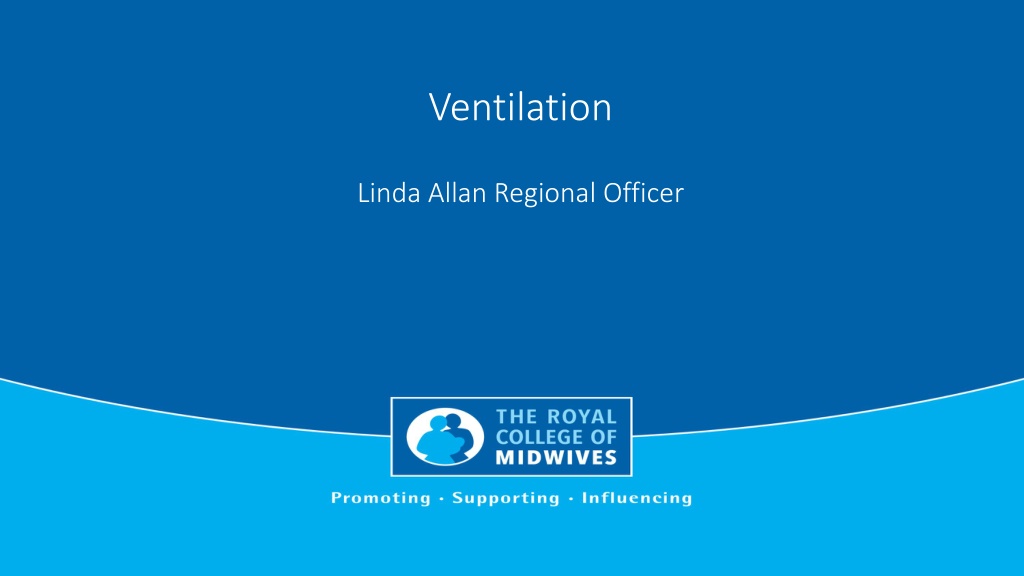

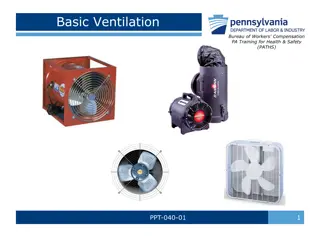
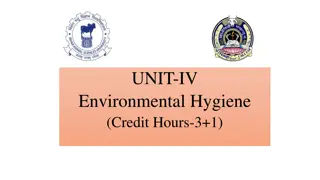
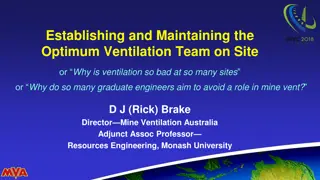
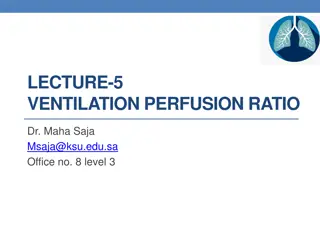
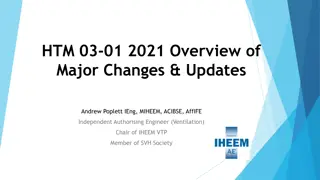
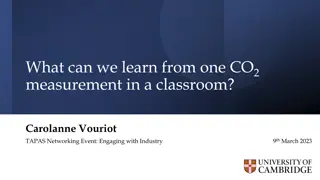
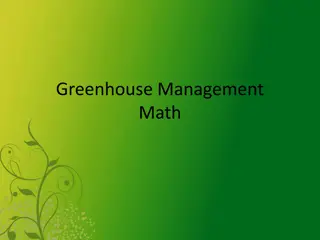


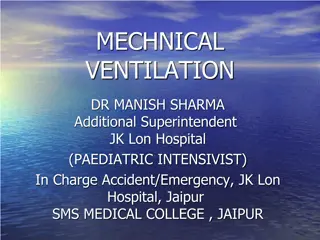

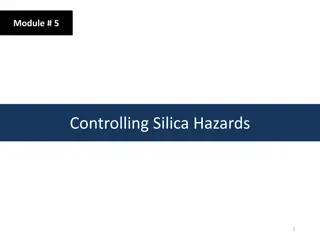
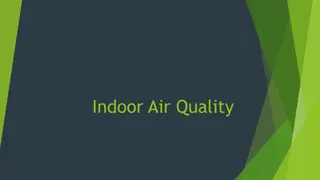

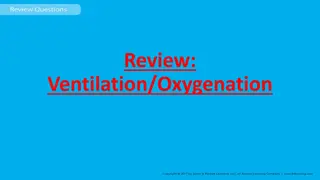

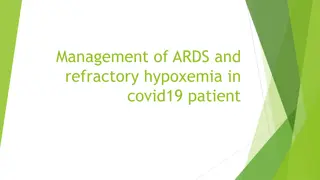
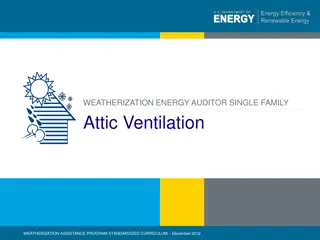

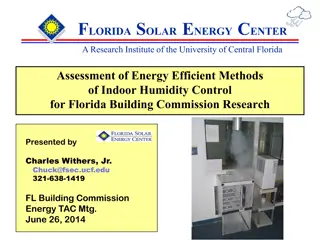
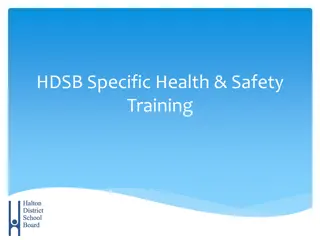


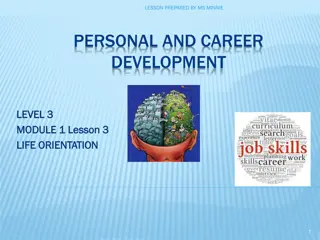
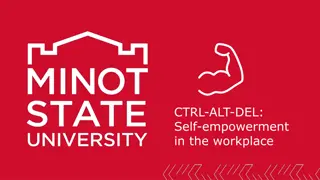
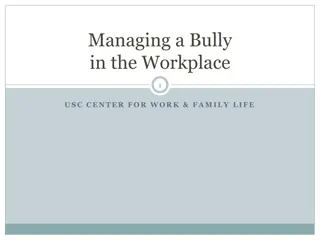

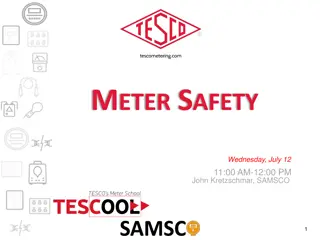
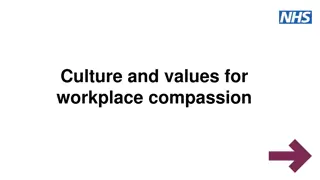
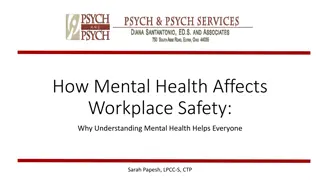
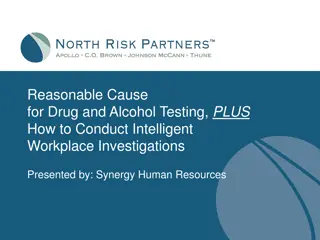
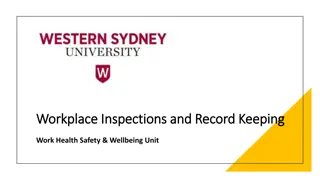
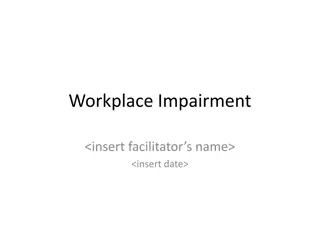

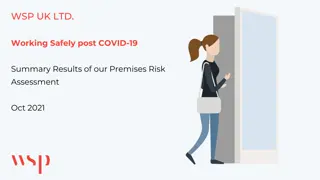

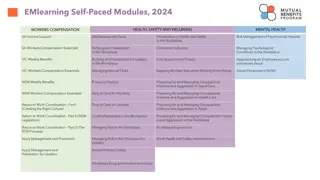

![Workplace Violence Prevention Plan in [District]: Definitions, Elements, and Implementation](/thumb/117038/workplace-violence-prevention-plan-in-district-definitions-elements-and-implementation.jpg)
